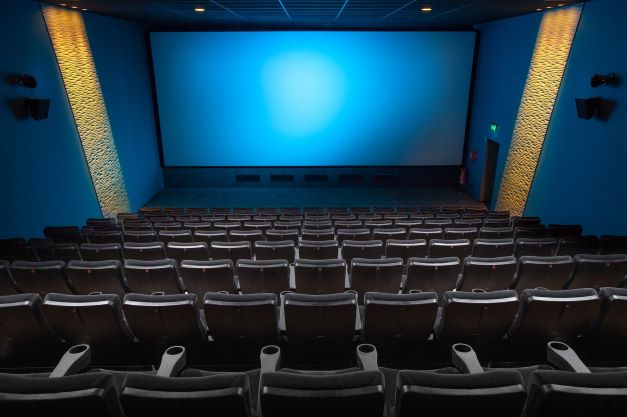

The problem of fluctuating volume levels when watching TV and streaming is common knowledge. Sometimes it’s the commercials, just too loud when compared to the much quieter remaining programming, sometimes it’s the streaming platforms like Netflix, Amazon Prime and Disney +, much louder when compared to TV programs, or it’s the almost obligatory volume jumps between commercials and user-generated content on YouTube.
But the constantly changing volume levels within feature films can also become a nuisance. The scene explodes out of all proportion and immediately afterwards the actors speak so quietly to each other that you can no longer follow exactly what is going on.
A widespread but very unsatisfactory solution is to use the remote control to constantly compensate for volume fluctuations. Most of the time, this does not work satisfactorily because you do not know the movie you are adjusting in real time. The result is that while you want to make the loud parts quieter and the quiet parts louder, you only really manage this in a small proportion of cases. The result: the loud parts unintentionally become even louder and the quiet parts too quiet.
This is particularly annoying for the other viewers on the sofa, and in the worst case for the neighbors or even sleeping family members – and for you, of course, because you can’t relax and enjoy the TV experience. Which is exactly why you’re sitting in front of the device in the first place.
TV settings in the sound menu
Another attempted solution can be found in some TV models in the sound menu under “Automatic volume adjustment”, “Night Mode” or similar.
This function usually works with classic dynamic compression. Classic dynamic compression works in such a way that certain sound components are taken from the loud parts so that the quiet parts sound louder. The sound material is pushed down a bit from the top, so to speak, and the so-called transients, which are responsible for the bright sound parts, can disappear or be reduced as a result. By depressing the loud sound components, the quiet ones are forced to become somewhat louder, if you have previously raised the overall volume again. However, if you listen to sounds produced like this over a longer period of time, you have the feeling that something is missing, namely the brilliance. Everything sounds a bit duller, which in turn makes the speech more unintelligible, and so you turn this feature off again after a short time.
Not without reason, the problem of fluctuating volume levels and sometimes incomprehensible dialogs on TV and streaming is widely known despite these solutions.
There is a new solution to this common problem, the HDSX TV Sound Optimizer. The palm-sized device is integrated between a TV and a TV external sound system, such as a soundbar, hi-fi system or even an AVR with connected speakers. This has the advantage that the usually too small and therefore tinny sounding mini speakers inside the TV are no longer needed, since the sound comes from the higher quality external speakers.
New technology for consistent volume
The HDSX TV Sound Optimizer works with two completely new technologies: HDSX.volume intelligently controls the volume in a new way so that the problems of classic dynamic compression described above do not even arise. The transients and all other sound components are preserved completely and as in the original, so there is just no fatigue effect or the impression that the sound is dull. Commercials are no louder than the rest of the program, and all programs and program sources are perfectly matched and harmonized in volume. The remote control is therefore no longer needed for volume control.
The second innovative technology built into the Optimizer is “HDSX.speech”. In contrast to functions sometimes built into TVs, such as “Clear Speech”, where the actors’ voices often sound very sharp and unnatural over time, HDSX.speech does not change the timbre of the voices. They continue to sound natural and expressive. The reason for this new natural clear speech is that HDSX.speech places the speech spatially in front of the rest of the sound scenery. It naturally has more space and is no longer overlaid by music and noise, which are the main reasons for partly incomprehensible dialogs on TV and streaming.
The HDSX TV Sound Optimizer is available in two connection variants:
a) TOSLINK with a digital optical input and output, as well as an analog output for connecting to digital and analog sound systems, as well as headphones.
b) HDMI ARC with an HDMI ARC input and output, as well as an analog input for connecting TV and sound systems, both of which have an HDMI ARC port. Thanks to HDMI ARC and CEC, it is possible to control both TV and sound system with only one remote control.

Simple installation
Installation is simple: the HDSX TV Sound Optimizer connects between the HDMI ARC or digital audio output of the TV and the HDMI ARC or digital or analog input of the sound system. One cable goes from the TV to the optimizer, one from the optimizer to the sound system. The little wonder gets power from a free USB port on the TV or sound system, so it switches on and off together with the TV or sound system and does not become a hidden power hog.
The sound result is total listening pleasure, as all program content can now be heard at a consistent volume with consistently clear speech on all channels. Your neighbours, sleeping family members and even viewers with different hearing abilities, sitting together in front of the TV, will be more than happy.


hdsx-Discover the new
Freedom of sound